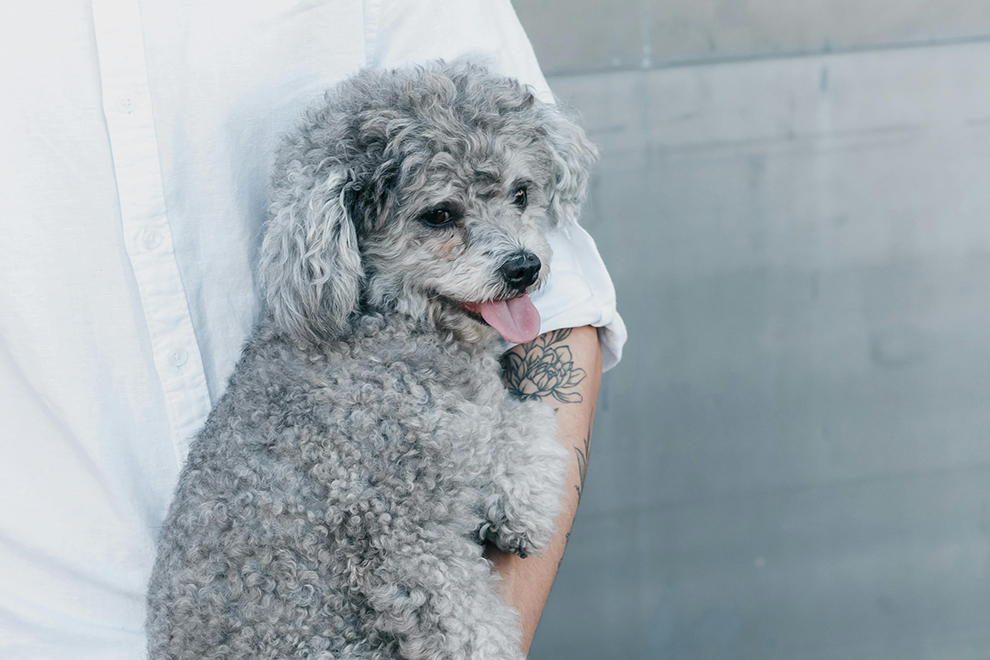Have you heard of lost dog syndrome? If your dog is lost and you find him a few days later, he may not recognize you. It’s more common than you’d think.
You’ve probably seen videos of returning soldiers reuniting with their dogs. They may have been deployed two years ago, and their dog knows them immediately. But that’s not typically the case when your dog is lost and on his own. The fact is, your dog may actually run from you once you locate him.
What Is Dog Survival Mode?
When a dog is lost, he is on his own and left to his own devices. Humans are suspicious to him. In this survival mode, a dog is reverting to his primal instincts. His quest becomes very basic: food and water, safety, and shelter.
When in survival mode, even well-trained dogs will not respond to commands. Their favorite squeaky toy will not lure them to you. Hearing their name will not spur their recollection. The dog you know is basically repressed. But do not fear, survival mode is only temporary. Once your dog is captured, he will return to normal with very little change in personality.
So, if calling his name might not work, using his favorite toy won’t draw him out, and he doesn’t trust you to offer him food, what do you do if your dog is lost? Here are some steps you can take:
1. Start looking immediately.
First of all, when you discover your dog is missing, start looking for him immediately. Some dogs go into survival mode almost immediately; some take days or weeks. The chances of you finding him, and of him coming to you voluntarily, are greater if you find him before survival mode kicks in. After that, simply understanding the behavior or state of mind of your dog will prove beneficial in your search.
2. Rally the troops.
When your dog is lost, it’s important to inform everyone who lives, works, or plays in your area about your missing pet. If you use social media, post immediately on your community site.
With friends and neighbors on alert, you should begin hearing of sightings. If your dog has not yet gone into survival mode, he may approach others and be happily captured and returned home.
However, if he is keeping his distance from people, he is in survival mode. Encourage others not to approach or attempt to catch or chase him. Doing so will scare him out of the area and make it more difficult for you to find him. Instead, ask that people simply report the sighting to you so that you have a general idea of where he is hiding.
3. Quietly approach a lost dog with food.
Go quietly to the area he was last seen. Take some food that would smell good to him, like canned dog food, steak, or hot dogs.
Don’t call for him or move toward him – that could frighten him.
Place the food around you and sit on the ground. Put your head down, don’t make eye contact, and avoid any sudden movements. It might take a while, but wait for him to approach you. If he gets close and is showing an interest in the food, slowly offer some to him with your hand.
If it scares him, just drop your hand and hold the food. Let him sniff you until your smell registers in his mind. You’ll know when he finally recognizes you – and what a joyful moment that will be!
4. Leave out some of your dog’s belongings.
Let’s say your neighbor calls and says your dog was spotted at the tree line at the edge of her property. Pull some things together that will be familiar to your dog – his bedding or blanket, your dirty clothes – and take these things to the spot where he was last seen.
Don’t put them out in the open; that will be too scary for him. Instead, place the items in the trees. Put out a big bowl of water too (he’ll be thirsty). Now leave the scene.
Check back later that evening or the next morning, and if you’re lucky, your dog might be nearby. Approach the area slowly; it might be wise to bring more items from home to bring about full recognition on the dog’s part.
Note: I have read that it’s not advisable to leave food out because it will draw other animals, but understanding that food is by far the most enticing thing to a dog, I would consider it. It may entail checking back more often, but it would be worth it.
5. Set a safe trap for your dog.
Another approach is to set a trap in the area your dog was last seen. Safe traps are available at hardware stores. Once in place, the trap should be checked often, at least every two hours in very cold or very hot weather, and to make sure another animal has not been trapped instead. If your dog is crate trained, you could also set out his crate. Leave something of his in the crate – a blanket or toy, for example – and he might pick up the scent of home. Don’t get discouraged if it doesn’t work immediately. Wait at least one week and if nothing happens, you might consider changing the location.
With any luck, you’ll never experience your dog in survival mode. It’s a nightmare for doting doggie parents like us. But if you do, I hope this information will be helpful in reuniting you with your pet.





